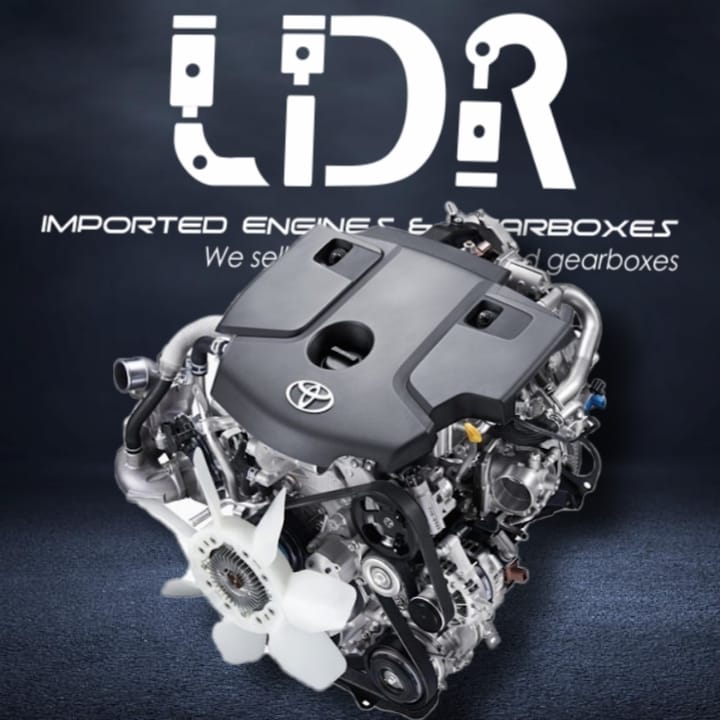Toyota Tazz: Why It’s a Top Choice for Urban Commuters and Small Families
Toyota Tazz: Why It’s a Top Choice for Urban Commuters and Small Families
Blog Article
Discover the current Trends in Engine Innovation Via Tazz
In the quickly developing landscape of automotive technology, Tazz stands at the center, highlighting substantial improvements in engine systems that prioritize both development and sustainability. From hybrid engines that maximize gas performance to the emergence of hydrogen gas cells, the patterns shaping modern-day powertrains are not just improving performance but also addressing critical ecological difficulties.
Crossbreed Engine Innovations
Crossbreed engine developments stand for an essential shift in automotive modern technology, integrating the advantages of interior combustion engines with electrical propulsion systems. This integration not just improves gas effectiveness but likewise decreases exhausts, meeting significantly strict ecological guidelines. By utilizing both power resources, hybrid engines can enhance efficiency, providing power when required while conserving gas during much less requiring driving problems.
Recent improvements in crossbreed innovation consist of enhancements in battery effectiveness and regenerative braking systems. These technologies permit better power healing throughout deceleration, which can be redirected to help in velocity or power auxiliary systems. Makers are concentrating on light-weight materials and small styles to maximize the effectiveness of crossbreed powertrains.
The development of plug-in hybrids has actually also broadened the marketplace, making it possible for drivers to charge their cars utilizing common electric outlets. This attribute frequently enables considerable all-electric variety, additional reducing reliance on standard gas. tazz. As the auto sector remains to advance, hybrid engine modern technologies are anticipated to play a crucial role in bridging the gap in between standard lorries and totally electrical designs, supplying a transitional option that accommodates diverse consumer needs and choices
Breakthroughs in Electric Powertrains
The auto landscape is quickly progressing, with electric powertrains emerging as a leading pressure in lasting transportation. Advancements in electric lorry (EV) modern technology are substantially improving performance, user, and performance experience. Secret developments consist of enhancements in battery chemistry, which have raised energy thickness, minimized charging times, and expanded general battery life.
Solid-state batteries, for instance, guarantee to revolutionize the marketplace by offering better security and performance compared to traditional lithium-ion cells. Developments in regenerative stopping systems are enabling automobiles to recoup energy during slowdown, adding to overall effectiveness.
Along with battery innovation, electrical motor designs are ending up being extra sophisticated. Advancements such as incorporated motors and advanced thermal management systems are aiding to optimize power shipment and reduce weight, inevitably enhancing vehicle dynamics.

Collectively, these advancements highlight the commitment to transition towards cleaner, extra effective transportation options, placing electrical powertrains at the leading edge of automobile development.
The Rise of Hydrogen Fuel Cells
Increasingly, hydrogen gas cells are obtaining grip as a practical alternative to traditional internal burning engines and battery electrical cars. This technology harnesses the chemical power kept in hydrogen, converting it into power with an electrochemical reaction with oxygen. The primary result of this process is water, making hydrogen fuel straight from the source cells an eco-friendly option with absolutely no discharges at the tailpipe.

Car manufacturers are significantly buying hydrogen fuel cell innovation, identifying its potential for long-range applications and rapid refueling abilities that measure up to conventional fuels. Additionally, markets such as sturdy transportation and public transportation are particularly well-suited for hydrogen fuel cells, where battery electric options might fail as a result of weight and array limitations.
As research and investment continue to expand, hydrogen fuel cells are poised to play a considerable function in the future landscape of clean transportation and energy services.
Enhancements in Internal Combustion Engines
Advancements in interior burning engine (ICE) innovation are transforming standard automobiles to satisfy contemporary environmental requirements and performance expectations. One of one of the most substantial improvements entails the combination of sophisticated fuel injection systems. These systems optimize the air-fuel mixture, boosting burning effectiveness and leading to decreased emissions. Direct gas shot, as an example, permits better atomization of gas, bring about even more complete combustion and boosted power outcome.
Furthermore, turbocharging has actually gained prominence, permitting smaller sized engines to provide greater performance without the weight of bigger engines - tazz. This technology not just increases performance but additionally adds informative post to decrease gas usage. Variable shutoff timing systems are likewise being improved, making it possible for engines to adjust to various driving problems for enhanced torque and responsiveness
In addition, the usage of lightweight materials in engine building is coming to be common, additional boosting gas efficiency by lowering total vehicle weight. Engine control devices (ECUs) are progressively advanced, making it possible for real-time changes that optimize efficiency and emissions.
These improvements jointly signify a crucial change in ICE innovation, aligning with worldwide sustainability objectives while still offering the efficiency vehicle drivers expect from their cars. As the market develops, these enhancements proceed to form the future of conventional auto design.
Future Trends in Engine Efficiency
Considerable advancements in engine performance are prepared for as manufacturers concentrate on incorporating sophisticated innovations to fulfill stringent ecological laws and consumer needs. The change towards electrification, hybrid systems, and alternate gas is reshaping the auto landscape, driving advancements that boost gas economic climate and minimize exhausts.
One of the essential patterns is the execution of sophisticated materials and manufacturing strategies. High-strength alloys and lightweight compounds add to minimized vehicle weight, hence improving overall efficiency. Furthermore, the fostering of turbocharging and variable valve timing modern technologies permits improved power outcome from smaller sized engines, better boosting fuel economic climate.

Final Thought
Developments in crossbreed engine systems, electrical powertrains, and hydrogen fuel cells demonstrate a commitment to decreasing discharges while boosting efficiency. Renovations in internal combustion engines and a focus on lightweight products add to general engine performance.
From hybrid engines that enhance gas efficiency to the appearance of hydrogen gas cells, the trends forming contemporary powertrains are not only improving efficiency but likewise dealing with critical ecological obstacles.Crossbreed engine innovations stand for a crucial shift in automotive technology, integrating the benefits of internal burning engines with electrical propulsion systems.Additionally, turbocharging has gotten importance, permitting smaller engines to supply higher efficiency without the weight of bigger engines. Furthermore, the fostering of turbocharging and variable valve timing technologies allows for improved power outcome from smaller sized engines, additionally boosting fuel economic climate.
Renovations in internal description combustion engines and an emphasis on lightweight products add to general engine effectiveness.
Report this page